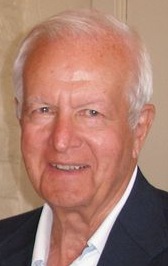Harry Lonsdale facts for kids
Quick facts for kids
Harry Lonsdale
|
|
|---|---|
 |
|
| Born | January 19, 1932 Westfield, New Jersey, U.S.
|
| Died | November 11, 2014 (aged 82) Indio, California, U.S.
|
| Alma mater | Rutgers University |
| Occupation | Businessman, scientist |
| Political party | Democratic |
Harold K. Lonsdale (born January 19, 1932 – died November 11, 2014) was an American scientist and businessman. He was also a politician who belonged to the Democratic Party. Lonsdale ran for a seat in the United States Senate in Oregon three times. He lost twice in the primary elections and once in the main election in 1990. In 2011, Lonsdale funded a special research project. It aimed to find out how life first began on Earth.
Contents
Early Life and Education
Harold Lonsdale was born in Westfield, New Jersey. His mother was an immigrant from Sicily, and his father was from Wales. In 1953, he earned a bachelor's degree in chemistry from Rutgers University. Four years later, he received his Ph.D. in chemistry from Penn State University.
Lonsdale joined the United States Air Force. While serving, he saw an above-ground nuclear test. He found this experience exciting. However, it also made him strongly against war.
A Career in Business
After his time in the Air Force, Lonsdale moved to San Diego. There, he worked for a company called General Atomics. He did research on special materials called membranes. Later, he worked as a scientist at Alza Corporation in Palo Alto, California.
By the mid-1970s, Lonsdale and his wife wanted more open space. They were tired of the crowded areas in California's Silicon Valley. So, Lonsdale left Alza. His family moved to Bend, Oregon.
In Bend, he started a company called Bend Research, Inc. He co-founded it with his partner, Richard Baker. The company focused on creating new technologies. These technologies helped industries like the pharmaceutical industry, which makes medicines. In 1989, a large company called Pfizer bought a part of Bend Research. This made Lonsdale a millionaire.
His Political Journey
In the mid-1980s, Lonsdale became very active in his community. He joined groups that cared about business, the environment, and local issues. He became a board member of the Oregon Museum of Science and Industry. He also helped lead a group that wanted to bring a large science project, the Superconducting Super Collider, to Oregon.
Running for Senate in 1990
In 1990, Lonsdale decided to run for the U.S. Senate. He challenged the person already holding the seat, Mark Hatfield, who was a Republican. Lonsdale chose to pay for his own campaign. He did not accept money from special interest groups.
Senator Hatfield usually avoided directly debating his opponents. But Lonsdale's challenge made him change his strategy. Hatfield accused Lonsdale of allowing his company to dispose of toxic waste. This accusation slowed down Lonsdale's campaign. In the end, Hatfield won the election easily. This was Hatfield's last Senate campaign.
Running Again in 1992
In 1991, Lonsdale planned another run for the Senate. This time, he aimed for Oregon's other Senate seat. It was held by Bob Packwood. Lonsdale faced a strong challenge for the Democratic nomination. His main opponent was U.S. Congressman Les AuCoin.
Lonsdale criticized AuCoin, saying he had been influenced by money from political action committees (PACs). He also pointed out AuCoin's connections to the timber industry. AuCoin, in turn, accused Lonsdale of similar issues. He noted that Bend Research had received millions in government defense contracts. AuCoin also mentioned Lonsdale's changing views on nuclear power.
The results of the Democratic primary election were very close. An automatic recount was needed. More than a month after the election, AuCoin was confirmed as the winner by only 330 votes. Lonsdale accepted the loss. However, he thought about running as a write-in candidate. He believed Oregon needed an "outsider" in the Senate. He received fewer than 6,000 write-in votes in the main election. Packwood won re-election.
1996 Senate Election
After Senator Hatfield retired in 1996, Lonsdale ran for the Senate again. He competed in the Democratic primary election. However, he lost by a large amount to Tom Bruggere.
Later Efforts
Lonsdale did not run for office again after 1996. But he continued to support changes to how political campaigns are funded. In 2006, one of the measures he supported, Measure 47, passed. This measure aimed to limit campaign financing. However, it did not go into effect. A related measure, Measure 46, which would have changed the Oregon Constitution to allow such limits, did not pass.
Scientific Interests
In 2011, Lonsdale, who was an atheist, announced a special award. He offered $50,000 to the best idea for how life first began. The award was for a clear idea about how life started, including its chemistry. It also asked how simple life could have become modern cells.
More than 70 proposals were submitted. In June 2012, the award was given to two chemists: John Sutherland and Matthew Powner.
Personal Life
Harold Lonsdale married his high school sweetheart, Connie, after graduating from Rutgers. They had two children. They divorced in 1985. He was briefly married to Susan Hammer in 1986. In 1993, he married Bryn Hazell.
Lonsdale retired from Bend Research in 1994. He moved to Southern California. He passed away in 2014 after having a heart attack.

